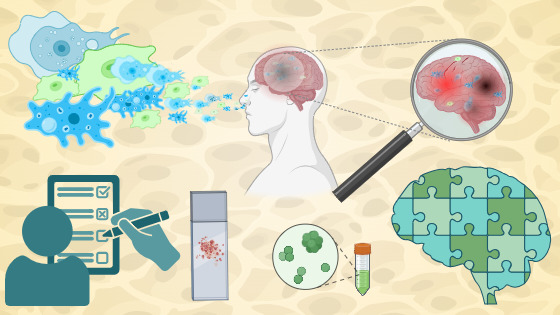Abstract
Amoebic meningoencephalitis (AME) in India is on the rise each year, presenting a growing concern for public health. Despite its rarity, the high fatality rate associated with this amoeba poses a significant challenge. With India's abundant freshwater reservoirs, there is a potential risk of AME spreading to a larger population, as evidenced by a few reported deaths in various states, prompting concern among public health experts and healthcare professionals. Given the sporadic nature of AME cases and the lack of a robust treatment landscape and infrastructure, along with a shortage of well-trained healthcare personnel, patients are often diagnosed in advanced stages and face fatal outcomes. It is imperative to enhance our public health system and operational strategies to effectively address such emerging health threats. By implementing advanced diagnostic techniques, efficient treatment plans, and evidence-based practices to strengthen the healthcare workforce, we can better prepare ourselves to combat unforeseen and challenging healthcare scenarios. The current editorial delves into India's readiness to manage AME, focusing on epidemiology, diagnostic capabilities, treatment protocols, public health strategies, and research endeavors. It identifies existing gaps and offers recommendations to bolster the country's capacity to tackle this emerging health crisis.
Keywords:
Amoebic meningoencephalitis, communicable diseases, emerging tropical illnesses, brain disease, IndiaReferences
Borkens Y. The Pathology of the Brain Eating Amoeba Naegleria fowleri. Indian J Microbiol. 2024;64, 1384–1394.
Güémez A, García E. Primary amoebic meningoencephalitis by Naegleria fowleri: pathogenesis and treatment. Biomolecules. 2021;11:1320
Pana A, Vijayan V, Anilkumar AC. Amebic Meningoencephalitis. StatPearls Publishing: Florida; 2024. Available from: https://www.ncbi.nlm.nih.gov/books/NBK430754/
Zhang H, Cheng X. Various brain-eating amoebae: the protozoa, the pathogenesis, and the disease. Front Med 2021; 15: 842–866
Naegleria fowleri infection. Center for disease control and prevention. Available from https://www.cdc.gov/naegleria/about/index.html. Accessed on 1 July 2024.
Cope JR, Ratard RC, Hill VR, Sokol T, Causey JJ, Yoder JS, Mirani G, Mull B, Mukerjee KA, Narayanan J, Doucet M. The first association of a primary amebic meningoencephalitis death with culturable Naegleria fowleri in tap water from a US treated public drinking water system. Clinical Infectious Diseases. 2015 Apr 15;60(8):e36-42.
Linam WM, Ahmed M, Cope JR, Chu C, Visvesvara GS, da Silva AJ, Qvarnstrom Y, Green J. Successful treatment of an adolescent with Naegleria fowleri primary amebic meningoencephalitis. Pediatrics. 2015;135(3):e744-8.
Masaka E, Reed S, Davidson M, Oosthuizen J. Opportunistic Premise Plumbing Pathogens. A Potential Health Risk in Water Mist Systems Used as a Cooling Intervention. Pathogens 2021; 10(4):462.
Kramer MH, Lerner CJ, Visvesvara GS. Kidney and liver transplants from a donor infected with Naegleria fowleri. J Clin Microbio. 1997;35(4):1032-3.
Sharma A, Sharma A, Guleria S. Successful treatment of a case of primary amoebic meningoencephalitis: How important is history taking. Indian J Crit Care Med 2015; 19(2):126-7.
Gupta V, et al. Socioeconomic impact due to COVID-19: An empirical assessment. Inf Process Manag 2022;59(2).
Best AM, Abu Kwaik Y. Evasion of phagotrophic predation by protist hosts and innate immunity of metazoan hosts by Legionella pneumophila. Cell Microbiol 2019; 21:e12971.
Meningitis. World Health Organization. Available from https://www.who.int/news-room/fact-sheets/detail/meningitis; 2023. Accessed on 1 July 2024.
Antonio Ferrante, Edgar Lederer, Curative properties of muramyl dipeptide in experimental Naegleria meningoencephalitis, Transactions of The Royal Society of Tropical Medicine and Hygiene 1986; 80(2):323–326.
Wu Q, Chen C, Li J, Lian X. Primary Amebic Meningoencephalitis Caused by Naegleria fowleri in China: A Case Report. Infectious Microbes & Diseases. 2023:10-97.
Murray CJ, Lopez AD. Global mortality, disability, and the contribution of risk factors: global burden of disease study. Lancet 1997; 349: 1436-1441.
Haston JC, Cope JR. Amebic encephalitis and meningoencephalitis: an update on epidemiology, diagnostic methods, and treatment. Curr Opin Infect Dis. 2023;36(3):186-191.
Boakye-Agyemang C. Why do neglected tropical diseases suffer low priority? Available from https://reliefweb.int/report/world/why-do-neglected-tropical-diseases-suffer-low-priority; 2022. Accessed on 1 July 2024.
Ahmad Zamzuri M, et al. Systematic Review of Brain-Eating Amoeba: A Decade Update. Int J Environ Res Public Health 2023;20(4):3021.
RKI. Amöbenenzephalitis. Robert Koch-Institute. Available from https://www.rki.de/DE/Content/Infekt/EpidBull/Merkblaetter/Ratgeber_Amoebenenzephalitis.html; 2015. Accessed 1 July 2024.
Alli A, et al. A Miracle Drug for Meningoencephalitis Caused by Free-Living Amoebas. Cureus 2021;13(3):e13698.
Hamill RJ. Amphotericin B formulations: a comparative review of efficacy and toxicity. Drugs. 2013; 73:919–934
Rehman SU, et al. Clinical manifestations and outcome of patients with primary amoebic meningoencephalitis in Pakistan. A single-center experience. PLoS One. 2023; 8:18 (11):e0290394.
How to Cite
License
Copyright (c) 2024 Biju Soman, Dr. Rini

This work is licensed under a Creative Commons Attribution-NonCommercial 4.0 International License.
Copyright© by the author(s). Published by the Evidence Journals. This is an open access article distributed under the terms of the Creative Commons Attribution (CC BY) license (https://creativecommons.org/licenses/by/4.0/), which permits unrestricted use, distribution, and reproduction in any medium, provided the original author(s) and source are credited.
Most read articles by the same author(s)
- Saloni Saloni, Biju Soman, Arabindo Tanti, Azra khan, Amit Kumar Goyal, Pawan Kumar, Global resurgence of monkeypox (mpox) virus: a review of current outbreaks and public health strategies , The Evidence: Vol. 2 No. 3 (2024): JUL - SEP




